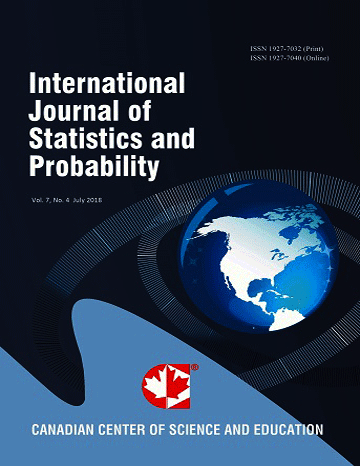Modeling HIV/AIDS Progression: A Comparative Analysis of the 3-Parameter Weibull, AFT, and Cox Proportional Hazards Models
- Nahashon Mwirigi
Abstract
This study models HIV/AIDS progression using the 3-Parameter Weibull Model and its adaptations, specifically the Accelerated Failure Time (AFT) Weibull and Cox Proportional Hazards (PH) models, to compare outcomes across age groups (20-30, 30-40, 40-50, 50-60, and over 60) and genders. Key performance metrics included Z-statistics, P-values, AD values, and standard errors to evaluate model fit and accuracy. The 3-Parameter Weibull model’s flexibility for time-varying hazards makes it well-suited for chronic conditions influenced by antiretroviral therapy (ART) and demographic factors.
Results showed that the AFT model captured ART effects effectively in the 50-60 age group, particularly among males, while its predictive power decreased for younger cohorts, where ART’s impact was less pronounced. The Cox PH model, although interpretable, struggled in dynamic hazard rate scenarios, performing moderately in stable age groups but limited in detecting ART effects overall. The 3-Parameter Weibull model showed a strong fit in the 40-50 and 50-60 groups, with significant metrics affirming ART’s impact on survival, though predictive precision declined for those over 60. These findings highlight the complementary strengths of the AFT and 3- Parameter Weibull models, suggesting their integrated use can enhance state-specific modeling of HIV/AIDS progression.
- Full Text:
 PDF
PDF
- DOI:10.5539/ijsp.v14n1p1
Index
- ACNP
- Aerospace Database
- BASE (Bielefeld Academic Search Engine)
- CNKI Scholar
- DTU Library
- Elektronische Zeitschriftenbibliothek (EZB)
- EuroPub Database
- Excellence in Research for Australia (ERA)
- Google Scholar
- Harvard Library
- Infotrieve
- JournalTOCs
- Mir@bel
- Open policy finder
- ResearchGate
- Technische Informationsbibliothek (TIB)
- UCR Library
- WorldCat
Contact
- Wendy SmithEditorial Assistant
- ijsp@ccsenet.org
